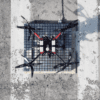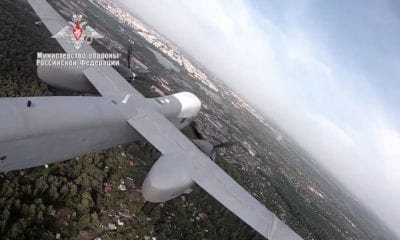
News
Tiny Solar-Powered, Bioinspired Drone from MIT
Tiny Solar-Powered, Bioinspired Drone from MIT
A tiny, solar-powered, bee-like robot could be the future of drones according to reports published in the MIT Technology Review– the RoboBee X-Wing.
Clever engineering by scientists at the Harvard Microrobotics Laboratory resulted in this small and light device weighing only about one-quarter of a paper clip. A paper describing it appears in the journal Nature. A video of the RoboBee it in action is available here.
Scientists have been trying to develop aerial robots inspired by bees and other flying insects for years now. But the main challenge was generating the huge amount of energy needed to keep robotic bees airborne. While real insects flap their wings to generate the thrust for moving through the air using energy stored in strong muscles their robot doppelgängers must rely on batteries, which are less efficient and tend to be heavy, or must be hooked up externally.
RoboBee X-Wing developed by Harvard University researchers is capable of true, un-tethered flight. It is equipped with four tiny wings made of carbon fiber and polyester, and even tinier photovoltaic cells. In bright light, its solar cells generate about five volts of electricity, which a minuscule transformer then boosts to the 200 volts necessary for liftoff. When the high voltage is applied to two components called piezoelectric actuators, they bend and contract, similar to a natural insect’s muscles. This drives the flapping motion of the RoboBee’s wings. This allows the RoboBee to flit about freely, whereas previous iterations of the robot could only takeoff, land or perch mid-flight while leashed to a power supply.
“We wanted to keep pushing the limit on how much power we could squeeze out of the artificial muscles in the robot, and how efficient we could make the whole system,” said Noah Jafferis, a postdoctoral engineer at Harvard and one of the leaders of the research. He added that the RoboBee is now able to match the thrust efficiency of similarly sized insects, such as bees.
The first time the robot took off in the lab, it lifted off with such force and speed that some of the researchers yelped in surprise. “We weren’t expecting it to take off like that at all,” said Farrell Helbling, a postdoctoral roboticist who also led research on the seminal flight.
So far, each of the RoboBee’s test flights has only lasted a couple seconds. The robot’s shortcoming is that it still can’t store energy. No sooner has it flown out of a small, well-lit area; it slows down and falls to the ground. But Dr. Helbling and Dr. Jafferis are confident that the robot could stay aloft for several minutes if its solar cells and circuits were given the proper tweaks.
These tiny robots will be able to zip up, down and sideways outdoors, they could be used to take air quality measurements, help search collapsed buildings for survivors, or even be deployed in drone swarms.
Earlier this year a team of engineers from the University of Southern California in Los Angeles built a four-winged flying robot called Bee+, which weighs considerably more (95 grams), but sports a footprint smaller than a penny.






















